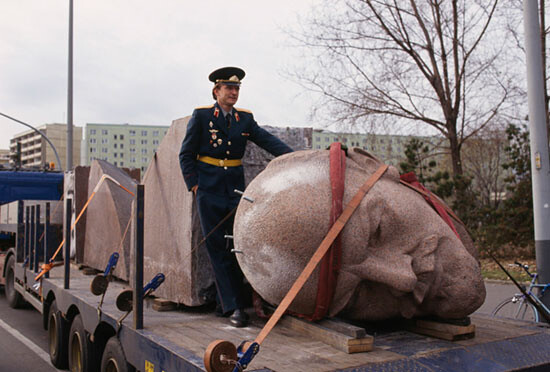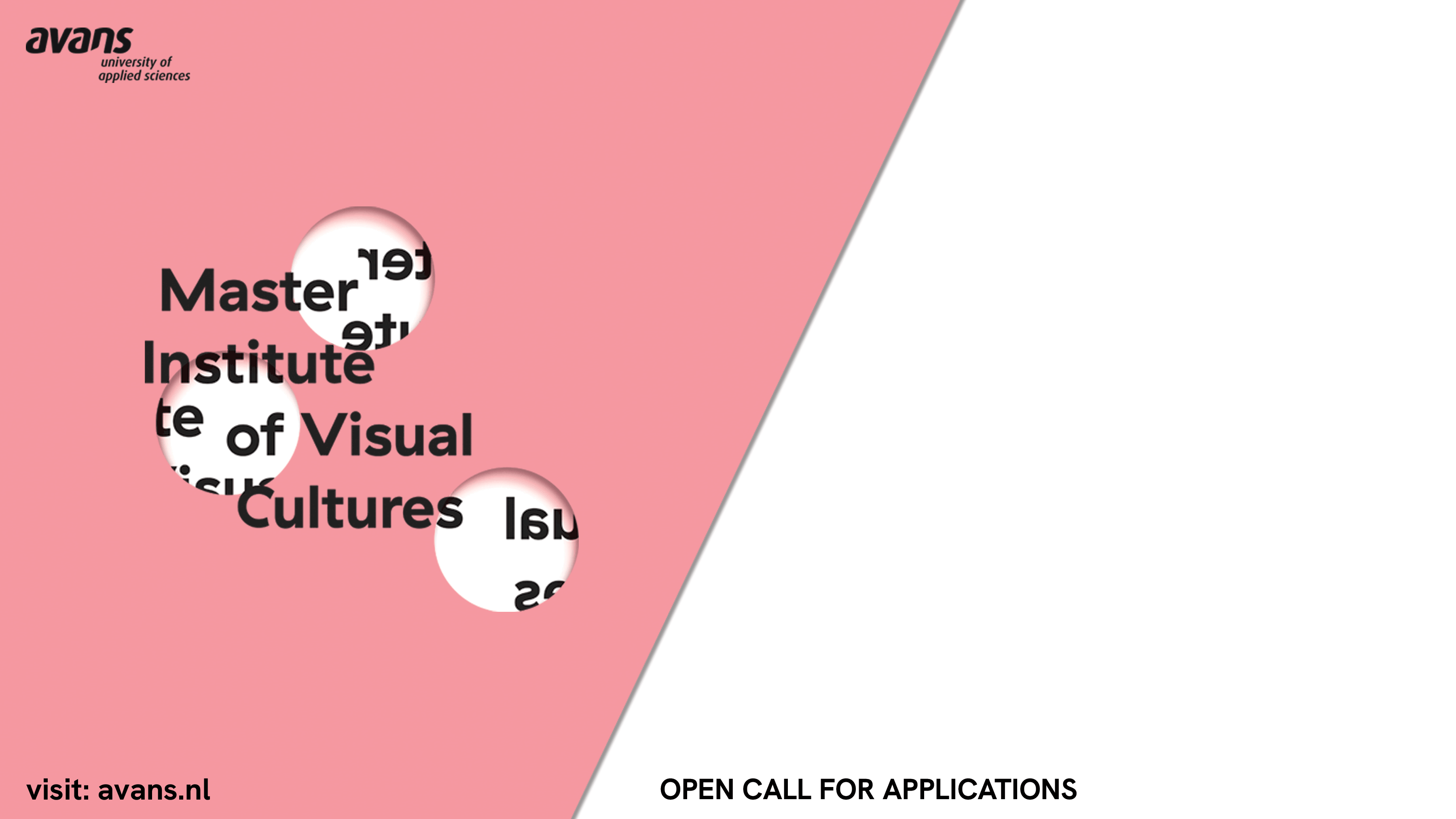The dramatic events in Russia and Ukraine over the past two years have begun a new phase in the struggle over the legacy of communism in the post-Soviet space. As the concrete features of “real socialism” become blurred and vanish, those necessary for the production of ideology become ever more sharply defined. It’s often argued that communism, buried a quarter of a century ago as living practice, has since acquired an afterlife in the form of a restlesscorpse, a remnant, a regurgitated survivor from the past, blighting the lives of new generations.
A popular explanation for the unfulfilled transition to market normality in Russia in the early 1990s involves the absence of a special act of “repentance,” after which the final nail in the coffin of communism would presumably have been driven in. This act, as far as one can tell, assumes that a single and all-encompassing purge of collective memory at all levels—from monuments and street names to individual consciousness—would be sufficient to exorcize the ghost forever. The enemy is understood to be dangerous precisely because it belongs more to the past than to the future. Its materiality is derivative and contingent. Of course, you can demolish every Lenin monument on Earth, but this doesn’t mean that communism has vanished once and for all. Besides, the fewer the external manifestations of this specter, the more powerful it becomes.
The Long Life of a Remnant
The theme of the inner slave, homo sovieticus, the “Red Man” who takes his leave but doesn’t actually go anywhere, has become a central theme in the work of the 2015 Nobel Laureate for literature, Svetlana Alexievich. In her Nobel Lecture, Alexievich stated: “The ‘Red Man’ wasn’t able to enter the kingdom of freedom he had dreamed of around his kitchen table. Russia was divvied up without him, and he was left with nothing. Humiliated and robbed. Aggressive and dangerous.”1
This post-Soviet man, in the final analysis, becomes a victim of himself, of his own unvanquished inner slavery, which explains his inability to assume and make use of his own freedom. Market reforms have altered the external conditions of his existence, providing new opportunities, but they have left his corrupted and crippled soul intact. The bitter legacy of this inner corruption has also defined the fate of the emerging generation that, taking advantage of the “inner freedom” of loans and growing rates of consumption, has given their consent to the authoritarian officials who provide them with this earthly bread. The Red Man, deprived of any material explanation, turns into a purely moral problem that refuses any hard and fast resolution, leading to its endless reproduction.
Such a dehistoricization of the Red Man turns him into a new myth, an eternal image, for which Alexievich predictably finds a correlate in the famous Grand Inquisitor section of Dostoyevsky’s The Brothers Karamazov.2 The Red Man is a natural phenomenon, but one that is false, derivative; it has replaced the authentic man, who is characterized by compassion, kindness, and the ability to live in the world with himself and with others. The clash of these two principles, the inner struggle that wracks anyone who finds themselves in an extreme situation (such as war or catastrophe), represents Alexievich’s main theme as a writer.
At the present moment, this struggle is far from over. The final battle still awaits us.
One cannot simply forget about the Red Man. It’s not possible to simply absorb him into the new reality. Alexievich is convinced that he will “disappear from the bloodstream” through a process of “suffering and overcoming,” and only then will we be able to reacquire our own selves and “finally … become like everyone else.”3
The famous Russian writer Vladimir Sorokin has an equally pessimistic outlook: “the post-Soviet man not only doesn’t wish to squeeze that Soviet pus out of himself but, on the contrary, recognizes it as fresh blood.”4 The Soviet “zombie” deprives us of the right to be contemporary. Instead, we are doomed to live amidst the putrid remains of the past. A return to normal historical time is not possible through a formal procedure of repentance, but requires something stronger—a chaotic upheaval or a purifying catastrophe. A forced return to normality, comparable to the process of de-Nazification in postwar Germany, would be a difficult but necessary reawakening, not unlike the one that follows “a high fever or an epileptic seizure.”5
The claim against today’s authorities in Russia comes down precisely to this conscious and criminal reluctance to bury the “Soviet corpse.”6 This reluctance is, crucially, not the product of those complex and muddled relationships of the present found in current military conflicts, economic crises, the breakup of the welfare state in Western Europe, or the rise of radical Islam in the Middle East. Instead, the Russian state, as a whole, with its interests, conflicts, divided society, and dependent economy, is declared to be the result of a collective madness and a historical deviation, which it is necessary to remedy with the aid of surgical intervention. The picture of the world acquires a distinctly Manichaean cast as it becomes simplified into a bloody struggle between the future and the past, in which the latter is inevitably doomed.
The trope of the “revived corpse” was itself revived after the Russian annexation of Crimea in 2014. Its predecessor can be found in the post-Soviet myth of homo sovieticus, a monster developed in the course of a grotesque experiment on human nature. This golem is contrasted with the more natural homo economicus, whose rationality is governed by the market and whose life is made viable through the political mechanism of liberal democracy.
In the sociology of Yuri Levada and his followers, the existence of homo sovieticus was established scientifically over the course of many studies. According to Levada, the defining features of “Soviet man” are “enforced self-isolation, state paternalism, egalitarian hierarchy, and a postimperial syndrome.” This “new man” was artificially developedat the beginning of the 1920s and is “characterized by individual irresponsibility, a tendency to shift the blame for his own situation onto anyone else: the government, parliamentarians, bureaucrats, Western countries, immigrants.” Changes in external conditions and, above all, in the socioeconomic bases of Soviet society, have not led to the restitution of human “normality”: “the destruction of former models has not been combined with any serious positive work on the understanding of the nature of Soviet society and Soviet man, the formulation of other guiding landmarks and social ideals.”7
The new society—capitalism—could not be built by noncapitalist man, and so an attempt to change the base of society directly was thwarted by the superstructure, as the remnants of the old way of existence became an obstacle to the new.
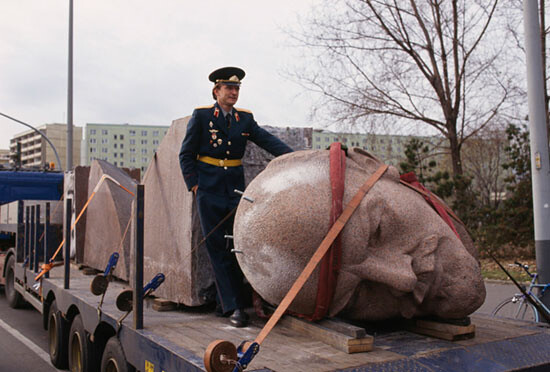

Vanquishing the Specters, Stalinist-Style
Just as the shadows of the past appear as obstacles blocking this mythological Red Man’s path toward the European future and market normality, the fulfillment and perfection of Stalinist socialism was itself understood to be hindered by similar obstacles, in the form of residual features of capitalist society. The Great Terror was explained in terms of the escalation of the struggle not with any currently exploitative class—these had already lost any power and property long before—but with the physical representatives of “former classes,” with their embodied remnants and shadows. These specters of the dead ruling classes turned out to be more cunning and dangerous than those “actually existing” ruling classes who had long since been defeated in open struggle. The tactics of the zombies were rather more complex than the tactics of their living representatives—in particular, their ability to constantly change their appearance, their endless donning of new masks, their ability to infiltrate any crack in the unity of the people and the government.8
These ghosts of former classes—who formed ever larger obstacles on the path toward socialism—had no defined place in the system of production. This meant that they could arise at any time in the subconscious of any member of the now-dominant classes of workers or peasants. The captive will of a worker or a peasant was controlled by the specter of an exploiter, forcing him to think, speak, and act in his own name against his own interests. Any accidentally spoken word could “objectively” serve the invisible enemy.
Here the past is seen as constantly ambushing the present from behind, jamming its gears and preventing it from reaching its full potential. Any government errors or contradictions fundamental to the new world absolutely can’t be analyzed in terms of their own content. The past is guilty of everything. It perpetually attempts to usurp genuine life and replace the future with its own ghosts. The “struggle with remnants” acquires, in this way, a violent and irrational character, given that one can act in a world of shadows only by groping in the dark, and their presence can only be verified with the aid of especially cultivated but unreliable feelings: vigilance, a “nose for” enemies, “a knack for recognizing them,” and so forth.
Louis Althusser placed the responsibility for Stalinist crimes squarely on the vulgar Hegelian idea of the “sublation” of the past. Residual elements,transferred from the past, are deprived of the quality of reality and contrasted with a certain “genuine” reality that has not managed to be brought fully into being. In this lies the potential forunbound tyranny, as any existing ties, any differences of opinion or position, can be denied a place in the world of the living and instead be declared remnants in need of elimination. Essential to such a repressive approach is the notion of the integral and impermeable nature of the past, which, as a monolith, obstructs the road ahead. In the same way that personal trauma makes someone a slave to their own past, the past itself is deprived of its own historical drama when it is reduced to a mere obstacle.
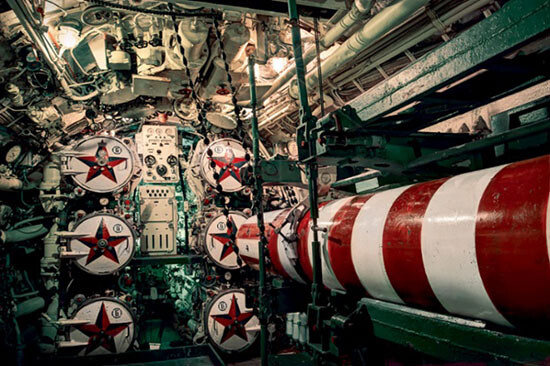

Why the Past Isn’t Cast Off
The fatal flaw of this model is its attempt to draw a clear line between a healthy present and a toxic past, of which one must be cured. Indeed, “the present can feed on the shades of its past, or even project them before it.”9 This past never becomes something distinct, but is always being projected backwards from the present, always conjuring “that law of interiority which is the destiny of the whole Future of Humanity.”
And so in Russia, owing to the complex relations between base and superstructure, to the specific political and ideological features of the new regime engendered by the Russian Revolution, it became possible to preserve and reproduce elements of the old despotic state and bestow on it an even more terrible and inhuman form. Paradoxically, this reactivation and restoration of the “ethical state” hanging over society was produced under the slogan of the struggle against remnants whose suppression required terror and emergencypowers. The Stalinist declaration of a total rupture with the past, achieved by denying the past any right to be part of contemporary society, led to a complete devaluation of Marxism. From a critical method which can be applied to evaluate its own place in a changing social reality, Marxism degenerated into a deformed and barren scholasticism whose role was reduced to justifying the regime as the “eternal present” that “ended” the history of the country and humankind.
Today, the “struggle with remnants” also strives to displace any explanation of contemporary social and political conflicts, and this leads to a dematerialization of reality. The remnants turn into an elusive and restless spirit, which can just as easily take root in institutions, people, or stones as it can abandon them. The proposed methods for exorcizing this spirit—de-communization (exorcism in relation to state and society) and lustration (the expulsion of the spirit from inanimate objects)—solve only a part of the problem. The specter of communism will come to the rescue of the government every time it needs to explain away its own mistakes or crimes. The remnants turn into authentic life, in relation to which everyday reality is a mirage. Reality is defective and not real enough to evaluate on the basis of its own contradictions.
It is precisely this failure to ask the “basic questions” that permits the proliferation of masquerades and political manipulations which result in living people struggling with the dead and destroying tombs instead of finding real flesh-and-blood opponents. The problem resides in the fact that the past cannot be extinguished and the present is always woven from a mix of different remnants, the unique combination of which also creates the new, whose novelty is always contingent.
Not every transformation has been accompanied by a collective repentance on the part of national communities. The fall of European colonial empires didn’t produce any full-fledged culture of repentance, and consequently there was no transformation in social consciousness. Moreover, the most serious example of full-scale repentance—that of Germany—was the result of an external defeat and was thus impossible to refuse. The reliability of such repentance—as a single, nonrepeated event—and the measure of its sincerity are very difficult to discuss. It involves a huge number of people, each of whom has their own relation to the criminal past. Collective repentance signifies nothing less than the declaration of a rupture with the past as an abstract fetish, as a part of history taken for the whole.
In Germany, the actual supersession of the legacy of Nazism in terms of specific features of the postwar West German state (for example, its concealed cruelty and readiness to use secret reprisalsthanks to the purely abstract nature of repentance) became the business of the radical generation of the 1960s and ’70s.
Jürgen Habermas linked the liberal democratic future of Germany with the differentiation between cultural and state politics. Cultural politics corresponds to the ethical choice of the individual and to a community’s melancholic relation to the past. State politics corresponds to an allegiance to general constitutional and humanistic principles. The rupture with the criminal past is not merely a question of state politics but—and this is fundamental—creates a new figure of the German citizen, for whom the question of existential responsibility for their own destiny is inseparable from a “a melancholy on account of the victims whose suffering cannot be made good, a melancholy that places us under an obligation.” The process of overcoming the past in this way passes through each separate existence and proportions “the continuities and discontinuities in the forms of life we carry on.”10
In the US, the rituals of repentance and the final break with formal inequality (above all the Civil Rights Act of 1964) didn’t lead to the eradication of structural racism, which has so manifestly reappeared in the issue of police violence. The effective supersessionof this racism, linked with social inequality, starts with the refusal to judge racism simply as a prejudice or as false consciousness cured through repentance and education.
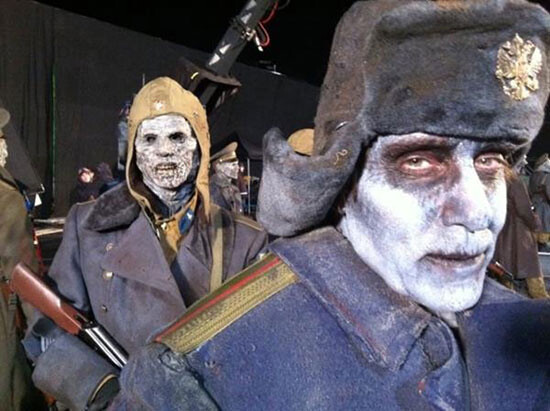

What Remains of the Soviet?
Clearly, a Soviet legacy exists in today’s Russia under Putin. It lives on at all levels, especially in mass consciousness, in certain distinctive traditions of the state apparatus, and in the vestigial survival of Cold War foreign policies. And it is alive in the trauma of the post-Soviet intelligentsia, which recognizes its historical mission in terms of a struggle with the communist specter. But all these elements have been rent apart; they do not form a complete whole that could be separated from the non-Soviet, the post-Soviet, or even the pre-Soviet. Neither on a stand-alone basis nor in simple combination can they represent some kind of central opponent. Nor do they form the fundamental issue of the present, whose solution would definitively mark the irrevocable step from one historical epoch to another.
The growing need for the Red Man myth reflects the nostalgia of the Russian (and the Ukrainian) intelligentsia for an integral picture of reality now lost. The need for moral abstractions and vulgar generalizations is based on a dogmatism of thought, the roots of which can be sought in the Soviet period. The dogmatic post-Soviet intelligentsia outlived not only the demise of its encompassing society, but also its own demise, the loss of its own social and ethical basis in post-Soviet reality. Using the construct of the remnant, designating a contrived communist specter as a primary enemy, the intelligentsia strives to affirm its own existence in this reality by insisting that the specter is other than a shadow.
Rejecting the theory of the “struggle with remnants” does not signify a simple reconciliation with reality, or an acknowledgment that the present state of things is normal, reasonable, or legitimate. Indeed, the existing regime, unlike the Soviet one, having no strategy and no dynamism of its own (apart from the dynamics of decay), also attempts to represent Russian society in the form of a Soviet remnant. Thus, since March 2014, one of the main strains of the Kremlin’s official propaganda has been the aspiration to legitimize its acts as the beginning of the “rebirth of the USSR,” that is, as the first modest steps toward superseding the consequences of the historically unjust demise of the Soviet state. And one must recognize that this propaganda has convinced many. The issue, however, is the fact that the fundamental injustice of the fall of the Soviet system consisted in the appearance of that ruling class which so self-assuredly dons the suit of the Red Man today.
The alternative to this endless spectral game played by both the authorities and the oppositional exorcists—a mere diversion from oppressive anxieties about the future—can only be the difficult breaking of the “spell” of the Soviet. Refusing to take the Soviet legacy as a remnant that one must either accept or reject wholesale, it is instead important to constantly untangle into its constituent parts: progressive and reactionary, liberating and enslaving, aiding the ruling elites or, on the contrary, throwing into question their right to rule.
Only in this way can one embrace the past, not as a shadow hanging over the living but as a “terribly positive and active structured reality,” just like “cold, hunger and the night are for [the] poor worker.”11 This is the only reality that is truly in need of change.
Svetlana Alexievich, “On the Battle Lost,” Nobel lecture, December 7, 2015 →.
Svetlana Alexievich, “Время second-hand: Конец красного человека” (Second-hand time: The demise of the Red Man), Дружба Народов, August 2013 →.
Interview with Svetlana Alexievich, news.tut.by, December 7, 2015 →.
Interview with Vladimir Sorokin, Kommersant, August 17, 2015 →.
Ibid.
Interview with Vladimir Sorokin, Radio Poland, June 23, 2015 →.
Lev Gudkov, Boris Dubin, and Natalia Zorkaya, Постсоветский человек и гражданское общество (Post-Soviet man and civil society) (Moscow: Moscow School of Political Research, 2008), 8–11.
This approach was analyzed in depth by Sheila Fitzpatrick in her well-known book Tear Off the Masks!: Identity and Imposture in Twentieth-Century Russia (Princeton, NJ: Princeton University Press, 2005).
Louis Althusser, “Contradiction and Overdetermination,” 1962. Available at marxists.org →.
Jürgen Habermas, “Historical Consciousness and Post-Traditional Identity: Remarks on the Federal Republic’s Orientation to the West,” Acta Sociologica, Vol. 31, No. 1 (1988): 10.
Althusser, “Contradiction and Overdetermination.”
Translated from the Russian by Giuliano Vivaldi.
